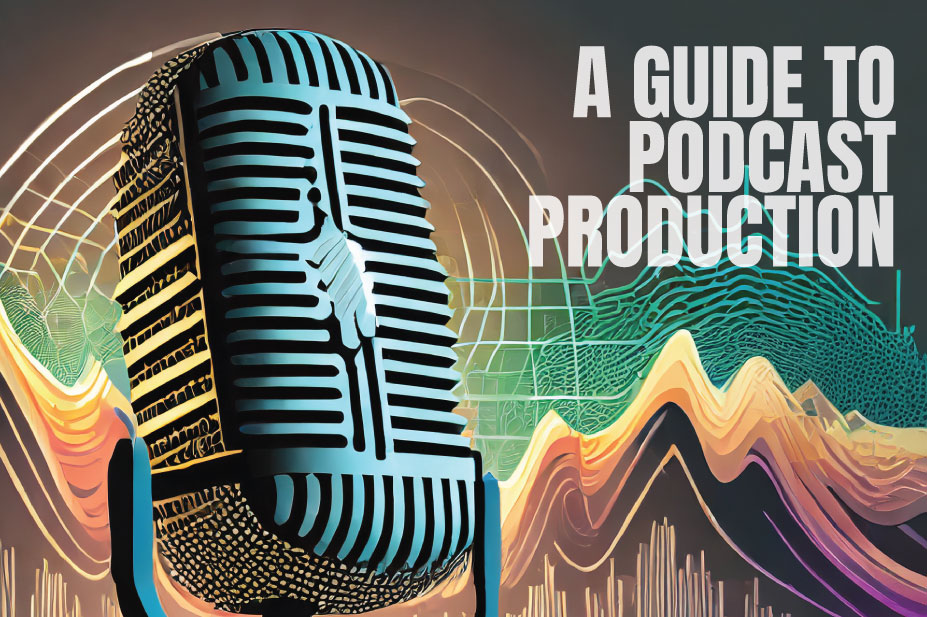Podcasting has become a popular medium for sharing information, stories, and entertainment. If you’re considering starting your own podcast, it’s important to understand the ins and outs of podcast production. This comprehensive guide will walk you through the step-by-step process of producing a podcast, from planning and recording to launching and promoting. Whether you’re a beginner or experienced podcaster, this guide will provide valuable insights to help you produce a professional podcast.
1. Preparing and Planning Your Podcast Strategy
Before you begin recording your podcast, it’s essential to have a clear plan and strategy in place. This will help you define the purpose and direction of your podcast, as well as identify your target audience. Here are some key steps to consider:
1.1 Define Your Podcast’s Focus
Start by determining the main topic or theme of your podcast. Consider your interests, expertise, and what you’re passionate about. This will ensure that you have a clear focus and can provide valuable content to your listeners. For example, if you’re a digital marketing expert, your podcast could focus on content marketing strategies.
1.2 Identify Your Target Audience
Understanding your target audience is crucial for creating content that resonates with them. Conduct market research to identify who your ideal listeners are, their preferences, and what they’re looking for in a podcast. This will help you tailor your content to meet their needs and interests.
1.3 Choose the Right Podcast Format
There are various podcast formats to choose from, such as solo shows, interviews, panel discussions, storytelling, and more. Select a format that aligns with your content and engages your audience effectively. For example, if you’re an expert in your field, an interview format where you invite industry leaders as guests can provide valuable insights to your listeners.
1.4 Determine Episode Length and Frequency
Consider how much content you have to share and how often you can consistently release episodes. Aim for a balance between providing valuable information and not overwhelming your audience. The average podcast episode ranges from 25 to 30 minutes, but the length can vary depending on your topic and format. Decide on a frequency that works for you, whether it’s weekly, biweekly, or monthly.
1.5 Choose a Memorable Podcast Name
Select a podcast name that reflects your content and is easy to remember. It should be unique, concise, and aligned with your branding if applicable. A catchy and relevant name can attract potential listeners and make your podcast more discoverable.
2. Setting Up Your Podcast Production Space
Creating a suitable recording environment is crucial for producing high-quality audio. While not everyone has access to a professional studio, there are steps you can take to optimize your recording space. Consider the following:
2.1 Find a Quiet Recording Space
Choose a quiet room where you can minimize background noise and interruptions. Soundproof the space as much as possible by using curtains, acoustic panels, or foam to absorb echoes and external sounds.
2.2 Invest in Essential Podcasting Equipment
While podcasting equipment can vary depending on your budget and requirements, there are a few essential tools you’ll need:
- Microphone: Invest in a good-quality microphone that captures clear and crisp audio. USB microphones are a popular choice for beginners due to their ease of use.
- Headphones: Use closed-back headphones to monitor your audio while recording. This will help you catch any issues or background noise.
- Pop Filter: A pop filter helps reduce plosive sounds (e.g., “p” and “b” sounds) that can distort your audio.
- Recording Software: Choose reliable recording software that allows for separate audio tracks and produces high-quality recordings. Riverside is a great option that offers studio-quality video and audio recording directly from your browser.
3. Recording Your Podcast
Once you have your setup ready, it’s time to start recording your podcast. Follow these steps to ensure a smooth recording process:
3.1 Test Your Equipment
Before recording, perform a test run to check if all your equipment is functioning properly. Make sure your microphone, headphones, and recording software are working as expected. This will help you avoid any technical issues during the actual recording.
3.2 Prepare Your Guests (If Applicable)
If you’re hosting guests on your podcast, provide them with information about the recording process and any specific instructions. This will ensure that everyone is on the same page and can contribute effectively to the conversation.
3.3 Start Recording
When you’re ready to record, hit the record button on your chosen recording software. Maintain a conversational tone, engage with your guests or audience, and stay focused on the topic at hand. Remember to speak clearly and at an appropriate volume.
3.4 Edit and Polish Your Recording
After recording, you’ll need to edit your audio to remove any mistakes, pauses, or background noise. Use podcast editing software or a digital audio workstation (DAW) to refine your recording. Trim unnecessary sections, add music or sound effects, and adjust the volume levels for a polished final product.
4. Launching and Distributing Your Podcast
Once you have your finished podcast episode, it’s time to launch and distribute it to your audience. Follow these steps to ensure a successful podcast launch:
4.1 Choose a Podcast Hosting Platform
A podcast hosting platform is where you’ll upload and store your podcast episodes. It generates an RSS feed that you can submit to podcast directories such as Apple Podcasts, Spotify, and Google Podcasts. Choose a reliable hosting platform that offers analytics, easy distribution, and customization options.
4.2 Submit Your Podcast to Directories
Submit your podcast’s RSS feed to popular podcast directories to make it accessible to a wider audience. Each directory has its own submission process, so follow their guidelines to ensure a smooth submission. This will increase the discoverability of your podcast and attract new listeners.
4.3 Create a Podcast Website
Having a dedicated website for your podcast is essential for building your brand and providing additional information to your audience. Include show notes, transcripts, and links to previous episodes on your website. Optimize your website for search engines to increase its visibility and attract organic traffic.
4.4 Promote Your Podcast
Promotion plays a crucial role in growing your podcast audience. Utilize various marketing channels, such as social media, email newsletters, guest blogging, and collaborations, to spread the word about your podcast. Engage with your audience, encourage them to share your episodes, and seek feedback to improve your podcast.
5. Repurposing Your Podcast
Maximize the reach and impact of your podcast by repurposing your content into different formats. Here are some ways to repurpose your podcast:
5.1 Transcribe Your Episodes
Transcribing your podcast episodes can benefit both your audience and search engine optimization (SEO). Transcripts make your content accessible to those who prefer reading or have hearing impairments. They also provide written content that search engines can index, increasing the chances of your podcast being discovered through organic search.
5.2 Create Blog Posts or Articles
Use your podcast episodes as inspiration for blog posts or articles. Expand on the topics discussed in your episodes and provide additional insights or examples. This allows you to reach a broader audience and drive traffic to your website.
5.3 Produce Short Video Clips
Select engaging moments from your podcast episodes and create short video clips to share on social media platforms like Instagram, Facebook, or YouTube. Video clips can attract new listeners and encourage them to explore your full episodes.
5.4 Compile Highlights or Best-of Episodes
Compile the best moments from your podcast episodes into a highlights or best-of episode. This provides a convenient way for new listeners to get a taste of your content and encourages them to listen to more episodes.
Conclusion
Producing a podcast requires careful planning, preparation, and execution. By following the steps outlined in this comprehensive guide, you’ll be equipped with the knowledge and tools to produce a professional podcast. Remember to stay consistent, engage with your audience, and continuously improve your content. Happy podcasting!
Note: This article has been created by Crezent Digital Marketing, a leading provider of podcast production services. If you need assistance with podcast production, contact us.


